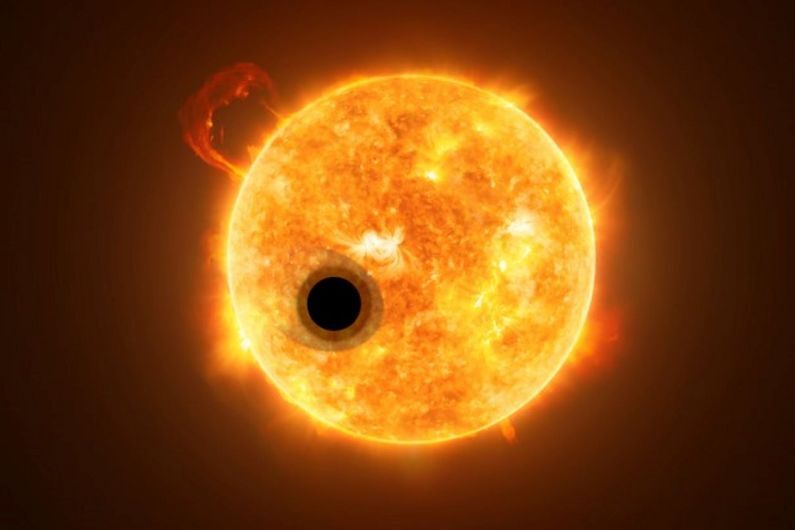
The “ Super Puff ” planet, unlike any other planet found in deep space, could change how we explore the universe
Scientists have confirmed the existence of a huge “super murmur” Exoplanet, The size of Jupiter but 10 times lighter and could change the way humanity explores the universe.
The planet, known as WASP-107b, was first found in 2017, but it wasn’t until recently that astronomers were able to confirm its low density, placing it in the “cotton candy” or “super puff” category.
“For WASP-107b, the most plausible scenario is that the planet formed far from the star, with the gas in the disk cool enough that gas accumulation could occur very quickly,” said lead study author Carolyn Biaulit. statement. “The planet was later able to move to its current position, either through interactions with the disk or with other planets in the system.”
Art rendering of WASP-107b exoplanet and its star WASP-107. Some of the star’s light flows through the layer of gas on an exoplanet. (Credit: ESA / HUBBLE, NASA, M.KORNMESSER)
“ Super Earth ”: NASA discovers a planet 10 billion years old unlike any other planet in deep space
The study was published in The Astronomical Journal.
WASP-107b orbits the WASP-107 star system, which is 211 light years from Earth. A light year, which measures the distance in space, is approximately 6 trillion miles.
WASP-107b is exceptionally close to its star, as it takes just 5.7 days to orbit its star, 16 times closer than Earth to the Sun. It also has a low density, as 85% of its mass is believed to be in the gas layer around its core. When these facts are combined, it has left astronomers many unanswered questions.
“We had a lot of questions about the WASP-107b,” Biaolit added. “How could a planet with such a low density form? How did its huge layer of gas prevent it from escaping, especially given the planet’s proximity to its star? This prompted us to conduct a comprehensive analysis to determine the date of its formation.”
Jupiter, by contrast, is noticeably more massive, has a core thought to make up 5% to 15% of its total mass, and is farther from the Sun than the star WASP-107b.
It’s possible that WASP-107b is in a completely different place in its star system, as it is evaporating.
“For WASP-107b, the most plausible scenario is that the planet has formed far from the star, with the gas in the disk cool enough that the gas build-up can occur very quickly,” noted co-author and astronomer Eve Lee. “The planet was later able to move to its current position, either through interactions with the disk or with other planets in the system.”
During their observations of WASP-107b, the researchers also discovered another planet in the system, WASP-107c. This planet is very different from WASP-107b, with an elliptical orbit and taking 1088 days to circle its host star.
NASA stumbled upon a space planet with three suns
WASP-107b will give new insight into how gas giants form and provide new evidence for this Jupiter And the Saturn Not able to.
“Exoplanets such as WASP-107b that have no analogues in our solar system allow us to better understand the mechanisms of planetary formation in general and the diversity produced by exoplanets,” Biaolit explained. “It motivates us to study it in great detail.”
NASA has discovered more than 4,000 exoplanets in total, about 50 of which are thought to be potentially habitable as of September 2018. They have the right size and the correct orbit of their star to support surface water, and at least in theory, support life.

“Analist. Schepper. Zombiefanaat. Fervente reisjunkie. Popcultuurexpert. Alcoholfan.”
